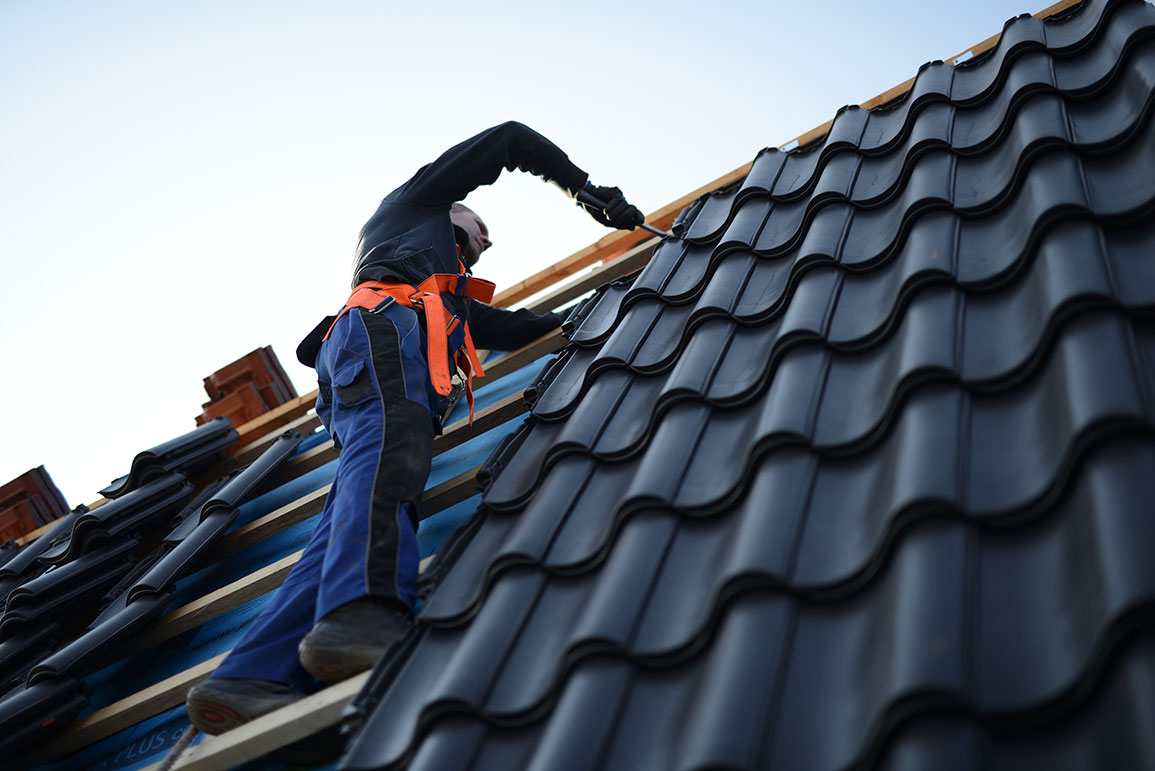
The choice of roofing can impact not just the aesthetics of a building but also its durability, cost, and suitability to the local climate. This blog will delve into the three main types of roofing materials: asphalt shingles, metal roofing, and tile roofing, providing insights into their characteristics, benefits, and considerations.
1. Asphalt Shingles
Overview: Asphalt shingles are the most popular roofing material in North America, favoured for their cost-effectiveness and straightforward installation. They are made from a fiberglass base topped with asphalt and mineral granules. This combination provides a good balance of affordability, durability, and aesthetic appeal.
Benefits:
- Cost-Effective: Asphalt shingles are among the most affordable roofing options available, making them an excellent choice for homeowners looking for quality on a budget.
- Versatility: They come in a variety of colours and styles that can mimic the look of more expensive materials like slate or wood. This makes them versatile enough to complement any architectural style.
- Ease of Installation: Asphalt shingles are lightweight and easy to install. This not only reduces the labour cost but also the time it takes to complete the roofing project.
- Durability: Modern asphalt shingles are designed to resist extreme weather conditions like high winds, heavy rain, and are even available in algae-resistant varieties to prevent staining.
Considerations: While asphalt shingles can last anywhere from 20 to 30 years, they are less durable than some more expensive materials and may require more frequent repairs or replacements in harsh weather regions.
2. Metal Roofing
Overview: Metal roofing, once used primarily for high-end or commercial buildings, has grown in popularity for residential properties thanks to its durability and environmental benefits. Materials typically used include steel, aluminium, copper, or zinc.
Benefits:
- Longevity: Metal roofs can last 40-70 years, depending on the material. Compared to asphalt shingles, this makes them a more sustainable long-term investment.
- Durability: Metal is highly resistant to weather-related damage. It does not corrode or crack, and it can withstand high winds. It is also fire-resistant, adding an extra layer of safety to homes.
- Energy Efficiency: Metal roofs reflect solar radiant heat, which can reduce cooling costs by 10-25%.
- Environmentally Friendly: Metal roofs are 100% recyclable at the end of their life, contributing to their credentials as an eco-friendly roofing option.
Considerations: The initial cost of a metal roof can be higher than asphalt shingles. However, the longer lifespan and energy savings can offset the upfront expense. Noise during rain or hail and denting are some concerns, although some types have insulation that can reduce the noise.
3. Tile Roofing
Overview: Tile roofs are highly durable and non-combustible, typically made from clay or concrete. They are popular in regions with hot weather or where there is a risk of fires due to their ability to insulate against heat and resist fire.
Benefits:
- Durability: Both clay and concrete tile roofs are extremely durable, with lifespans that can exceed 100 years when properly maintained.
- Aesthetic Appeal: Tile roofs have a distinctive style often associated with Mediterranean, Spanish, or Southwestern architecture. They come in a variety of colours and styles.
- Thermal Performance: Tiles have excellent insulating properties, which help keep houses cooler in hot weather and contribute to energy savings.
- Low Maintenance: Tile roofs require minimal maintenance as they are built to resist decay, mould, and insect damage.
Considerations: Tile roofing is significantly heavier than asphalt or metal roofing, requiring additional structural support, especially in older homes. It is also more expensive, both in terms of materials and installation.
Conclusion
Choosing the right roofing material depends on a variety of factors including budget, climate, durability needs, and aesthetic preference. Asphalt shingles offer a cost-effective and versatile option, metal roofs provide exceptional durability and energy efficiency, while tile roofs can offer unmatched longevity and classic appeal. Each material comes with its unique set of benefits and considerations, making it important for homeowners to assess their needs and consult with professional roofing contractors to make the best choice for their specific circumstances. By choosing the right roof, you not only protect your home but also enhance its overall value and performance.


